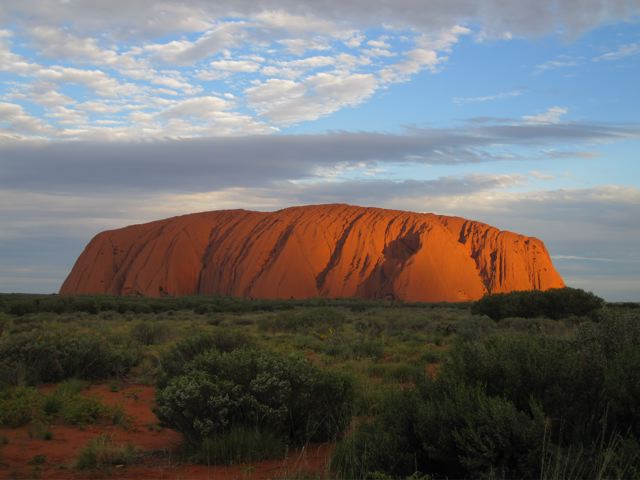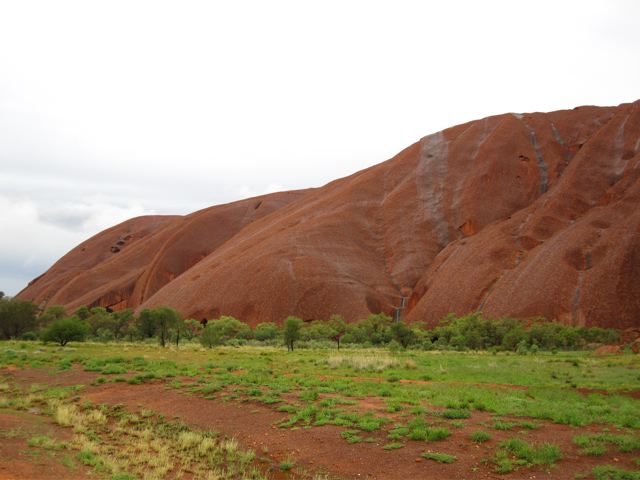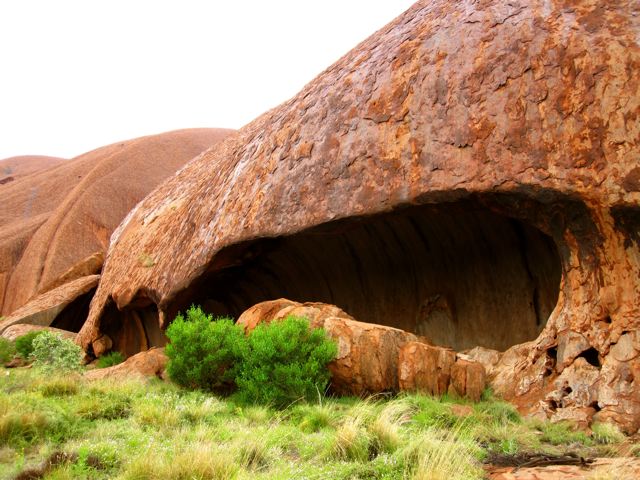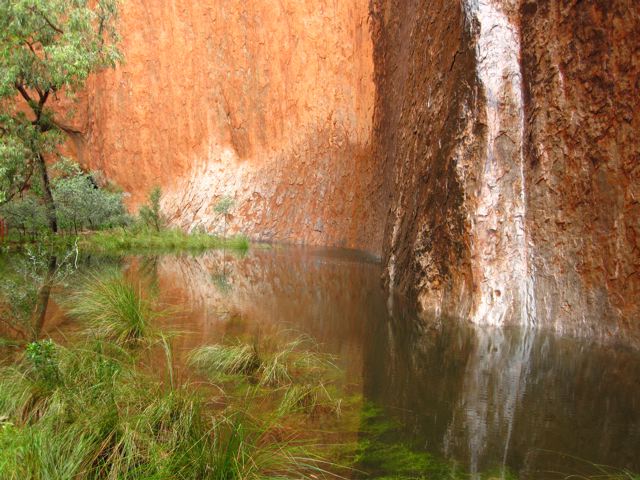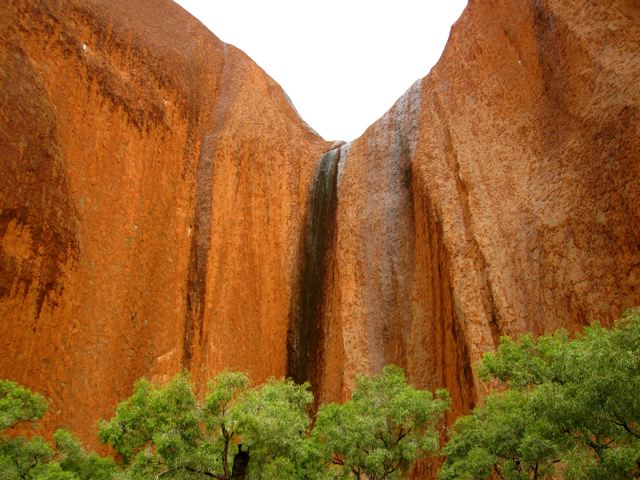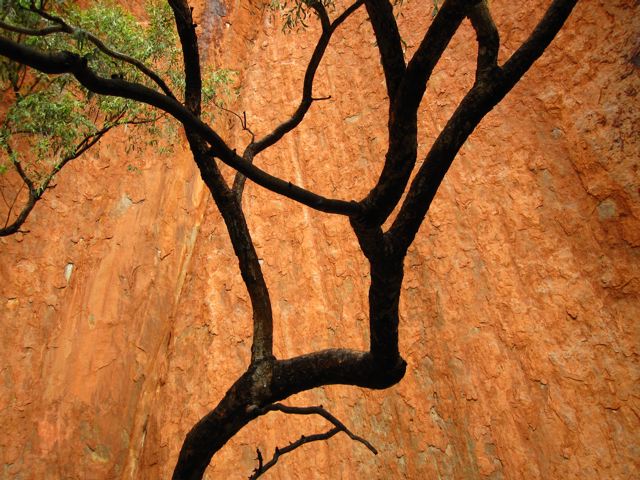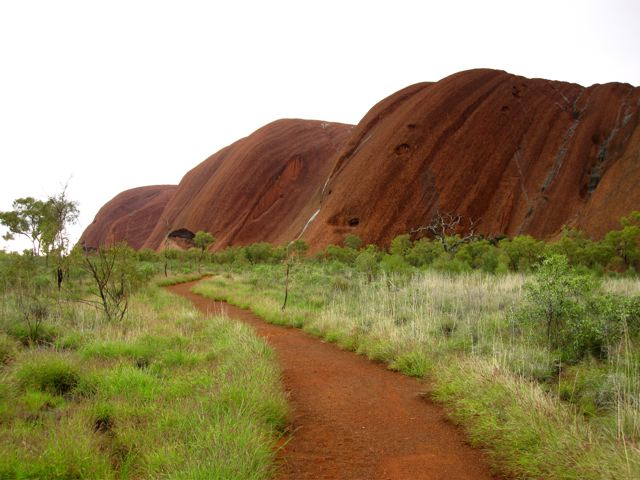Located 335 km (208 mi) southwest of Alice Springs is the UNESCO World Heritage Site of Uluru (aka Ayers Rock). One of Australia’s most iconic natural wonders, this massive sandstone monolith rises 348 m from the desert floor, is estimated to be approximately 500 million years old, and is sacred to the native Anangu people of Central Australia.
Avg.Time: 3.5 hrs
Start / Finish: Mala or Kuniya carparks
Season:
- All year. Summers can be scorching hot, whilst winter nights can occasionally dip below freezing.
Maps / Info:
- Upon entering Uluru – Kata Tjuta National Park, you will receive a brochure that contains information and basic walking maps for the park’s various hiking options. This is all you will need for orientation/navigation purposes.
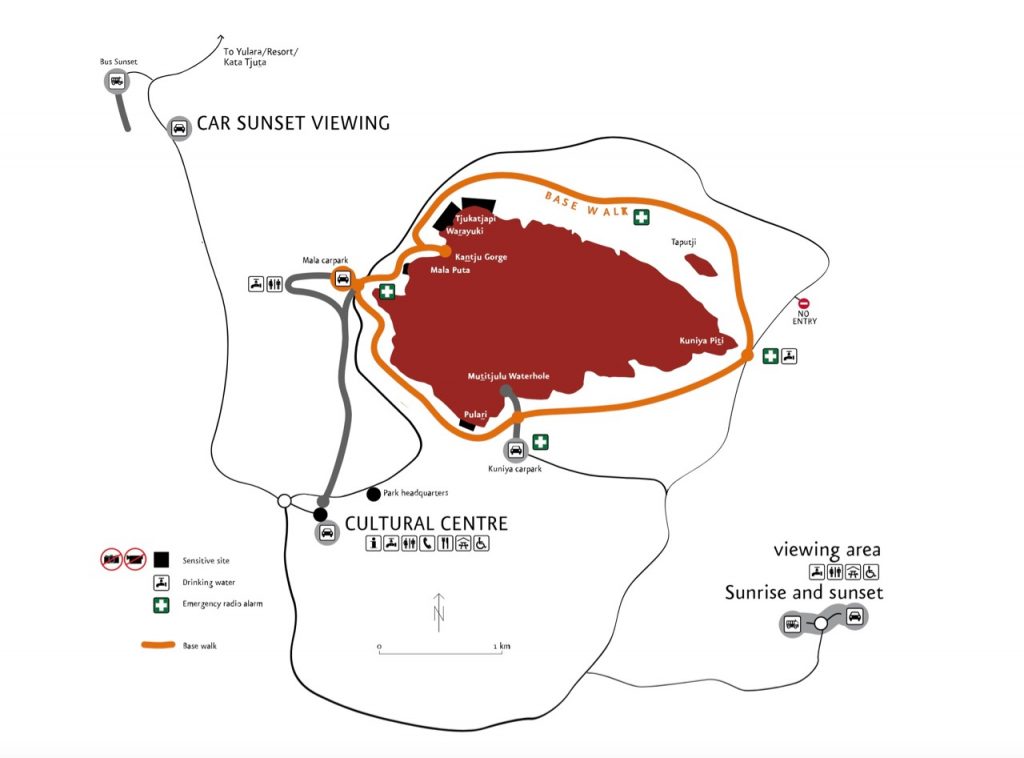
Uluru Base Walk overview map (ParksAustralia.gov.au)
Five Facts about Uluru:
1. Uluru is an isolated sandstone rock formation situated in the heart of Australia’s ‘Red Centre’.
2. Uluru is the second biggest monolith in the world, after Mount Augustus in Western Australia.
3. Uluru is the traditional Aboriginal name for the rock monolith. The name given by European explorers in the 1870s was Ayers Rock. Since 2002, the official title for the site is Uluru/Ayer’s Rock.
4. In 1985, Uluru was returned to its original owners, the Anangu people, who have inhabited the area for thousands of years. It is now co-managed by the Anangu and Federal Parks Australia under terms of a 99-year lease.
5. Uluru and the surrounding National Park were given UNESCO World Heritage status in 1987.
Route / Conditions:
- This may be the easiest hike on the entire website. Nonetheless, it is one that should not be missed if you find yourself in this part of the world.
- In order to avoid both the crowds and the heat, this hike is best done very early in the morning (immediately after sunrise) or late in the afternoon.
- Bring a hat, sunscreen and plenty of water.
- As tempting as it may be, I do not recommend climbing Uluru. From a cultural perspective, Uluru is sacred to the Anangu. Environmentally speaking, the high number of tourists who climb the rock contributes to increased levels of erosion as well as pollution of the various water holes situated around the rock’s base. “How?” There are no permanent toilet or waste disposal facilities on top of Uluru. When the elements “kick in”, where do you think everything is blown or washed away? (UPDATE: As of October 26, 2019, the climb up Uluru was permanently closed. Click here for details).
Sleeping:
- Camping is not permitted within the park. Accommodation is available at Yulara resort village.
Overview:
- The world-famous rock in Australia’s red centre lives up to the hype. It is one of the earth’s greatest natural wonders and there is no better way to see it than to take a mellow stroll around its circumference.
- As you have come all this way, don’t miss the spectacular Valley of the Winds walk (4.6 m/7.4 km) at nearby Kata Tjuta.
Discover more from The Hiking Life
Subscribe to get the latest posts sent to your email.
